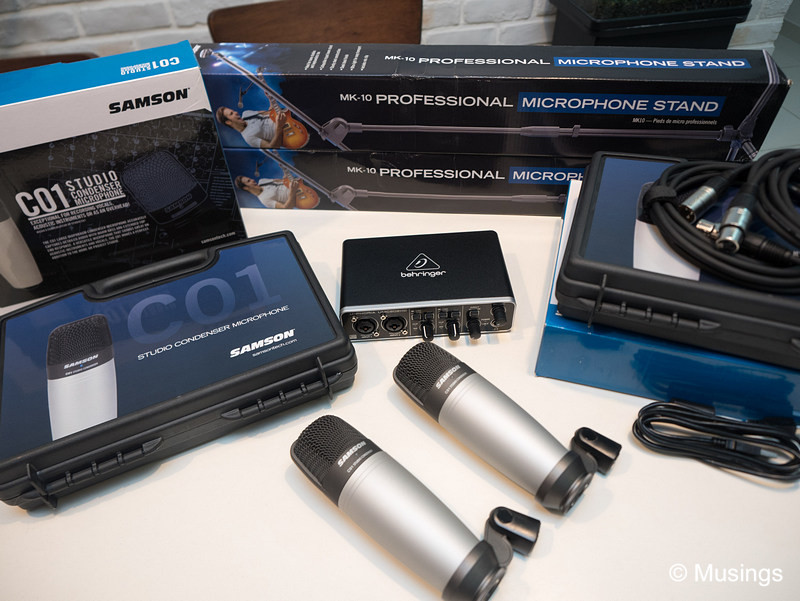One of my life-long ambitions has always been to do a proper studio recording of pieces I play on the piano. There’s been sporadic occasions over the years where I’ve attempted to do variations of that. For example, using a Korg keyboard work station to record my piano compositions in the early to mid ’90s and then using sampled notes from a Steinway & Sons Grand Piano to render the MIDI files to CD-quality audio recordings. And more recently, HD video recordings using the E-M1 – which I’m still not yet brave enough to make public on YouTube LOL.
I’ve never been fully satisfied with either method. Recording via MIDI format results in pristine audio quality, but the approach always felt a little unauthentic. You’re essentially recording computer data that gets next mapped via instrument samples, then finally rendered to an actual audio recording. The benefit of a MIDI approach though is that you can fix note errors and dynamic issues before mapping.
Recording via camcorders and digital cameras is closer to a studio recording – but the built-in microphones in these camera devices are usually second fiddle to imaging. These devices are first and foremost imaging devices not sound-recorders! The camera microphones do not offer good dynamic range, pick up all kinds of odd noises, and most significant, do not present a proper stereophonic experience.
So, earlier this year I resolved to get round to trying the real deal: I’ll find out and learn what is necessary and how to do home studio recordings. This is of course a highly specialised and professional industry, and those beautiful and warm-sounding acoustic piano recordings we hear are the intentional results of a whole host of contributing factors: including the performance of the artiste, the ambiance in the recording venue, the equipment setup, and the sound engineering.
The initial survey was pretty intimidating and learning curve very steep: a lot of the learning material both text and videos, and even equipment documentation seem to be written for persons who’re already familiar with the domain of professional-standard recording. I wasn’t ready to throw a lot of money into this thing either – professional level condenser microphones can easily cost thousands each – but I found very well-regarded branded equipment that were at entry-level prices, and was lucky enough that Amazon was able to ship them here too using free international shipping. More on that in the next post.

There’s a last method too: using digital pianos, or acoustic pianos with silent piano modules – like the Yamaha U30BL upright we have at home. The U30BL’s module though hasn’t quite resulted in the kind of audio fidelity that I need, so in case this simple home recording studio setup still doesn’t work well, I’ll have to either revisit recording using the U30BL’s silent piano module, or think very hard about getting a digital piano – if we can find space at home for it to begin with!
Recent comments